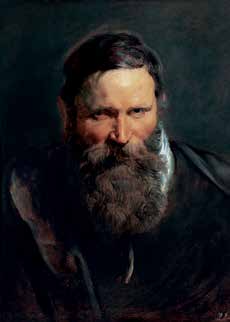The National Gallery of Ireland brings Dutch masters to Dublin in new stunning exhibition
By Brian Bowe
If you’re reading this, you’re wasting your time. You should be at The National Gallery, basking in their brand spanking new exhibition – Turning Heads: Rubens, Rembrandt and Vermeer. This very impressive showcase brings together masterworks by famous Dutch and Flemish artists of the sixteenth and seventeenth centuries. A collaboration between the Royal Museum of Fine Arts Antwerp and the National Gallery of Ireland, Turning Heads: Rubens, Rembrandt and Vermeer runs till 26 May; and here’s why you shouldn’t miss it:

The exhibition features 78 works in total, elegantly displayed throughout five themed rooms (Tronie, Studying Heads, Costume, Expression, and Light and Shadow) all of which explore the artists’ fascination with the human face, experimenting with expressions, play of light and accessories. The term ‘tronie’, a rare word in today’s common parlance, is an Old Dutch term for a picture which depicts a face. Unlike portraits, the identity of the subject is unimportant, and more focus is paid to the picture’s use of light and expression and overall technique.
You’ll encounter a lot of low status sitters here, such as maids and peasants – common people with uncommon faces. Turning Heads seeks to trace the emergence of this particular art phenomenon from the sixteenth century via the works of legendary artists Peter Paul Rubens, Rembrandt van Rijn, and Johannes Vermeer.
“This exhibition is a celebration of the mastery and enduring appeal of Rubens, Rembrandt, and Vermeer,” says Dr Lizzie Marx, Curator of Dutch and Flemish Art at the National Gallery of Ireland and Curator of the exhibition. “It provides a rare opportunity to delve into the world of ‘tronies’ as told by these legendary artists, showcasing their unique ability to capture the essence of their subjects with unparalleled skill.

Denis & Catherine O’Brien, 2016. Image: National Gallery of Ireland
“This show is special as it presents a unique opportunity to have a powerful encounter; to come face-to-face with people from 300-400 years ago through an extraordinary selection of paintings. We are excited to bring these masterpieces to Ireland, offering visitors a chance to see works by some of the most influential figures in art history.”
Highlights of the exhibition include Peter Paul Rubens’ Head Study of a Bearded Man, an oil painting which exemplifies the artist’s mastery of light and shadow, showcasing intricate brushwork, vibrant colours, and detailed facial expression, capturing the man’s character and emotion. Then there’s The Girl with the Red Hat, Vermeer’s smallest recorded painting. The artist’s expertise in manipulating light is evident in the delicate rendering of the highlights on the girl’s earrings using small strokes of white, as well as the subtle green glint in her eye created by a similar highlight.
Rembrandt’s The Laughing Man is a fine example of how the painter often used himself as his own model in his early years as an independent master in Leiden, experimenting with light and facial expressions. “The portrait has such a freshness and animation to it, which gives the impression that it’s instantaneous,” says Marx. “It feels like Rembrandt has captured the very moment he lets his smile break for the first time, when he would actually have taken at least a few hours to capture that expression.”

(Credit: Mauritshuis, The Hague)
In addition to showcasing pieces by renowned artists like Rubens, Rembrandt, and Vermeer, Turning Heads also presents artworks by Jan Lievens, Albrecht Durer, Anthony Van Dyck, and several other prominent figures in the art world.
The set up of the exhibition is exceptional and worth highlighting. Each artwork is carefully positioned against dark walls, creating a striking contrast that draws the viewer’s attention. The soft but direct spotlighting illuminates each piece with precision, effectively enhancing the details and colours while maintaining a crisp presentation. This thoughtful display technique ensures that every artwork truly pops, allowing visitors to fully appreciate the beauty and intricacy of each piece.
“Turning Heads is not about portraits,” says Dr Nico Van Hout, Head of Collection Research. “About anything but portraits, actually. Artists make use of people we don’t need to recognise. It’s those heads we show. Very ordinary people. Where the face tells its own story. Often they are small works, stunningly executed. You don’t get any closer to the artist.”
You need to book a ticket for Turning Heads: Rubens, Rembrandt and Vermeer. Tickets can be booked in person at the Gallery, over the phone or online (10% discount on online bookings).
Weekdays: Adult €12.50 – Senior/Jobseeker €10.50 – Student €8
Weekends: Adult €19 – Senior/Jobseeker €15.50 – Student €12.50.
For further information, visit nationalgallery.ie



